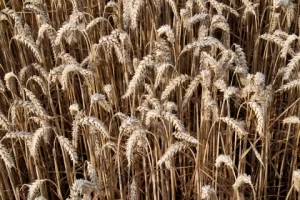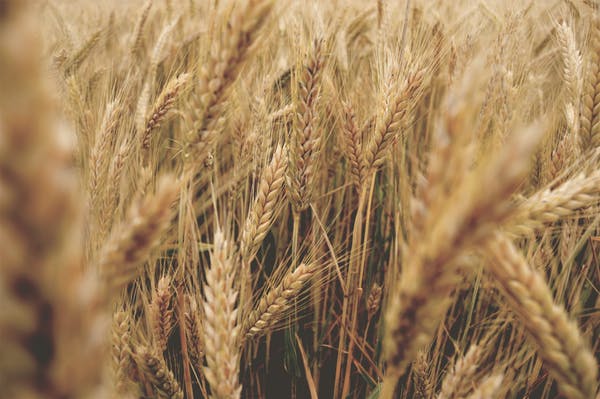Wheat Under Fire: Examining the Effects of Heat Waves on Crop Quality

Wheat is one of the world’s most important crops, providing a crucial source of food and income for millions of people. However, rising temperatures due to climate change are having a significant impact on wheat production around the globe. Heat waves, in particular, are becoming more frequent and intense, posing a major threat to wheat crops and the people who depend on them.
The effect of heat on wheat crops can have a significant impact on the plant’s growth, development, and overall yield. Wheat is a cool-season crop that requires moderate temperatures to grow and develop properly.
While much of the focus on the Wheat quality can be defined in various ways, but generally refers to characteristics such as protein content, starch quality, and the presence of contaminants like mycotoxins. These factors can have significant implications for the nutritional value and usability of wheat, as well as its market value.
Understanding wheat quality
Wheat quality is a broad term that encompasses various physical, chemical, and nutritional characteristics of wheat grains that determine their suitability for different uses. It can be influenced by a variety of factors, including genetics, growing conditions, harvest and post-harvest practices, and environmental stresses such as heat waves.
Some of the factors that influence wheat quality include:
- Protein content: This is a critical factor for wheat quality, as it affects the functionality of gluten. This protein gives wheat dough its elasticity and allows it to rise during baking. The higher protein content is generally associated with better bread-making quality.
- Starch properties: The type and properties of starch in wheat grains can affect their cooking, processing, and sensory qualities. For example, some types of wheat are better suited for making pasta, while others are better for baking.
- Contaminants: Wheat can be contaminated by various substances, including mycotoxins produced by fungi, pesticides, and heavy metals. These contaminants can affect the nutritional quality and safety of wheat products.
- Grain hardness: This refers to the physical properties of wheat grains, and can influence milling efficiency, flour yield, and the texture of finished products.
Wheat quality matters to farmers and consumers alike for several reasons. For farmers, it can affect the marketability and profitability of their crops, as high-quality wheat commands a higher price. For consumers, it can affect the nutritional value and sensory properties of wheat-based products like bread, pasta, and baked goods. In addition, wheat quality can influence the suitability of wheat for different food applications, such as specialty bread or gluten-free products. Overall, understanding wheat quality is crucial for ensuring a reliable and sustainable supply of high-quality wheat for food production.
The effects of heat waves on wheat quality
Heat waves can have a significant impact on the quality of wheat crops, affecting various grain characteristics and potentially increasing the risk of mycotoxin contamination. Here are some examples of how high temperatures can impact wheat quality:
- Protein content: Heat stress during grain filling can lead to reduced protein content in wheat grains. This can affect the quality of wheat flour and its suitability for making bread, as lower protein content can result in weaker gluten and poor dough elasticity.
- Starch properties: Heat stress can also affect the properties of starch in wheat grains, leading to changes in cooking and processing characteristics. For example, high temperatures can lead to decreased gelatinization temperature, which can result in undercooked or overcooked grains.
- Mycotoxin contamination: Heat stress can increase the risk of mycotoxin contamination in wheat, as high temperatures and drought conditions can create ideal conditions for fungal growth. Mycotoxins can affect the safety and nutritional quality of wheat products, potentially causing health problems for humans and animals.
Case study: Australia’s “once-in-a-century” heatwave
The prolonged heatwave experienced by Australia during the 2020-2021 growing season had a significant impact on wheat quality, with farmers reporting lower yields and poor grain quality. Specifically, the heatwave caused decreased protein content and weakened dough strength in wheat crops. To address these issues, the Australian wheat industry is focusing on developing heat-tolerant wheat varieties, improving irrigation and fertilization practices, and implementing post-harvest treatments to mitigate the effects of heat stress on grain quality.
In addition, industry stakeholders are working to educate farmers on the best practices for managing heat stress in their crops, such as adjusting planting dates and using shade or cooling measures during periods of extreme heat. By taking these steps, the Australian wheat industry is working to ensure a sustainable supply of high-quality wheat for food production despite the challenges posed by climate change.
Mitigating the effects of heat on wheat quality
To mitigate the effects of heat on wheat quality, several strategies can be employed, including:
- Breeding heat-tolerant wheat varieties: Researchers are working to develop wheat varieties that can better withstand high temperatures and maintain grain quality under heat stress. This involves identifying genetic markers associated with heat tolerance and using them for breeding new varieties with improved heat tolerance.
- Improving irrigation and fertilization practices: Proper irrigation and fertilization can help to mitigate the effects of heat stress on wheat crops by maintaining soil moisture and nutrient levels. This can improve the overall health and quality of wheat plants and help them to better withstand heat stress.
- Using foliar sprays to protect wheat plants from heat stress: Foliar sprays containing plant hormones, antioxidants, and other compounds can help to preserve wheat plants from the damaging effects of heat stress. These sprays can improve plant growth and development, reduce oxidative stress, and maintain grain quality under heat stress.
- Modifying planting dates and crop management practices: Adjusting planting dates and implementing other crop management practices (such as using shade or cooling measures during periods of extreme heat) can help to minimize the effects of heat stress on wheat crops and maintain grain quality.
Examples of current research in this area include studies focused on developing heat-tolerant wheat varieties, such as the Heat and Drought Wheat Improvement Consortium (HeDWIC) in Australia. Researchers in this consortium are using a range of approaches, including genome-wide association studies, to identify genetic markers associated with heat tolerance and develop new heat-tolerant wheat varieties.
Other studies are investigating the use of foliar sprays and other interventions to protect wheat plants from heat stress and maintain grain quality, such as a recent study from China that found that foliar application of melatonin could improve heat tolerance in wheat. By continuing to explore these and other strategies for mitigating the effects of heat stress on wheat quality, researchers and industry stakeholders can work towards ensuring a sustainable supply of high-quality wheat for food production in the face of climate change.
If you want to learn more about sustainable agriculture Click Here…
Conclusion
In conclusion, this post has explored the impact of high temperatures on wheat quality and the potential strategies for mitigating the effects of heat stress on wheat crops. We have discussed the factors that influence wheat quality, including protein content and starch quality, and how high temperatures can lead to lower-quality grain and increased mycotoxin contamination. Additionally, we have examined how the Australian wheat industry is responding to the heatwave’s effects on quality and the examples of current research in this area.
As climate change continues to pose a threat to wheat quality and global food security, policymakers and consumers must take action to address these issues. This can involve supporting research into heat-tolerant crop varieties, promoting sustainable farming practices, and reducing greenhouse gas emissions. Consumers can also play a role by choosing to support farmers and businesses that prioritize sustainability and climate resilience in their operations. By taking action now to address the impacts of climate change on wheat quality, we can help to ensure a sustainable supply of high-quality wheat for future generations.
The effect of heat on wheat crops is significant, and it is essential to understand its impact to take the necessary steps to protect and optimize crop yield.

